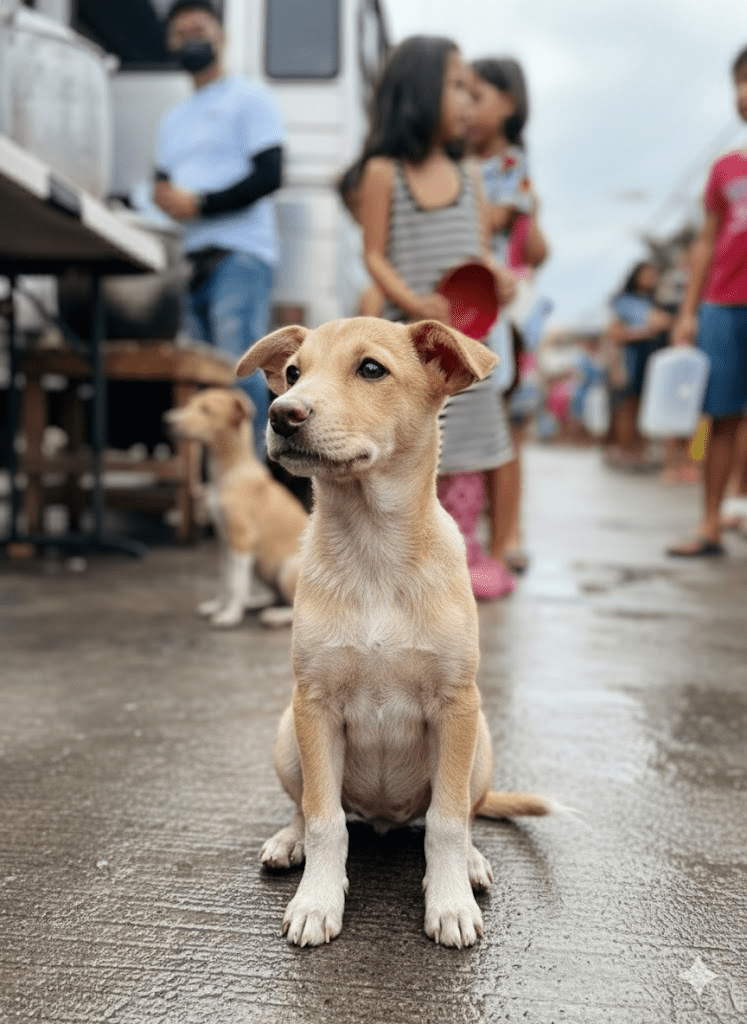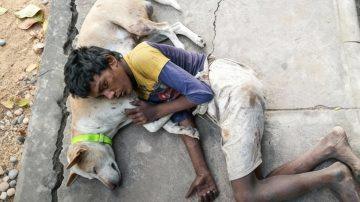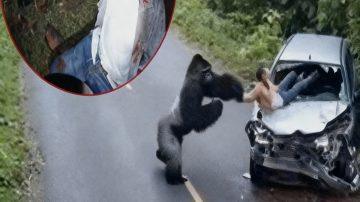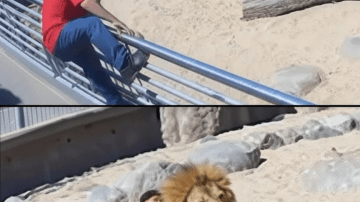The bustling streets of a Southeast Asian town often tell tales of vibrant life, resilience, and community spirit. Yet, beneath this lively veneer, another narrative quietly unfolds—one of persistent struggle against hunger, touching not just its human inhabitants but every living being reliant on their compassion. It was on one such ordinary afternoon that an extraordinary scene unfolded, captured in a poignant photograph that would soon echo across digital landscapes. A line of children, their faces a mix of hopeful anticipation and quiet yearning, waited patiently for a simple plate of food. Among them, however, sat a small, unassuming puppy, its gaze fixed forward, devoid of the usual canine clamor. No barks, no frantic tail wags, just a profound stillness that spoke volumes. This wasn’t merely a picture; it was an unexpected window into the universal language of hunger, an urgent call to acknowledge the often-overlooked silent sufferers, and a powerful testament to the impact of even the smallest acts of kindness. This single image, initially just a snapshot of a moment, began to unravel a deeper story, revealing twists of fate and unexpected connections that would challenge perceptions and ignite a renewed sense of responsibility.

The image, quickly shared and re-shared, ignited a flurry of comments and concern. Many focused on the children, a natural and understandable reaction. But a significant number found themselves drawn to the small, tan-colored puppy. “He’s just like the children,” one commenter wrote, “patiently waiting his turn.” This seemingly simple observation sparked a debate: was the puppy merely an opportunist, or was it a sentient being experiencing hunger in the same profound way as the humans around it? The unexpected twist came when a local animal rescue organization, spotting the viral photo, recognized the puppy. They knew him as “Bantay,” a stray they had been trying to catch for weeks, notorious for his elusive nature and uncanny ability to disappear into the labyrinthine alleys whenever approached. His presence in this orderly line, openly vulnerable, was entirely out of character.
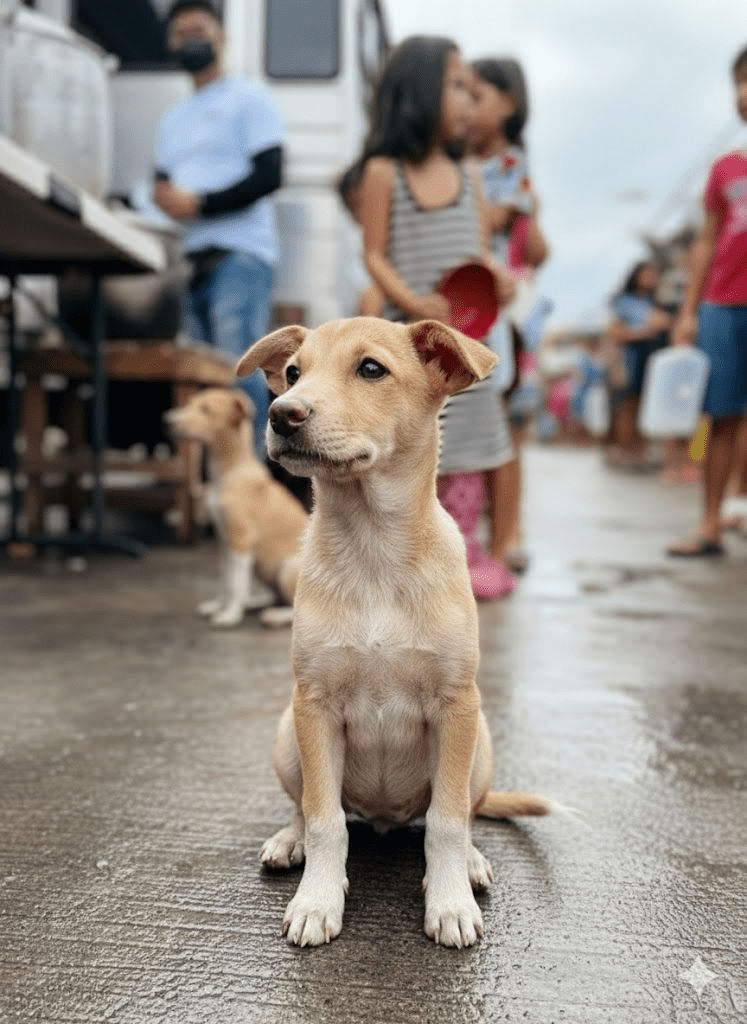
What the rescue team discovered when they finally located Bantay was even more surprising. He wasn’t alone. Tucked away in a discarded pipe nearby was a small litter of newborn puppies, hidden so cleverly that they had escaped notice for days. It became clear that Bantay’s unusual patience in the food line wasn’t just about his own hunger; it was about the survival of his helpless pups. He wasn’t just waiting for a meal; he was desperately trying to secure sustenance for his family, demonstrating an innate, powerful drive that mirrored the protective instincts of any parent, human or animal. This revelation added another layer of emotional depth to the initial photograph, transforming a simple act of waiting into a profound narrative of parental love and sacrifice in the face of adversity.
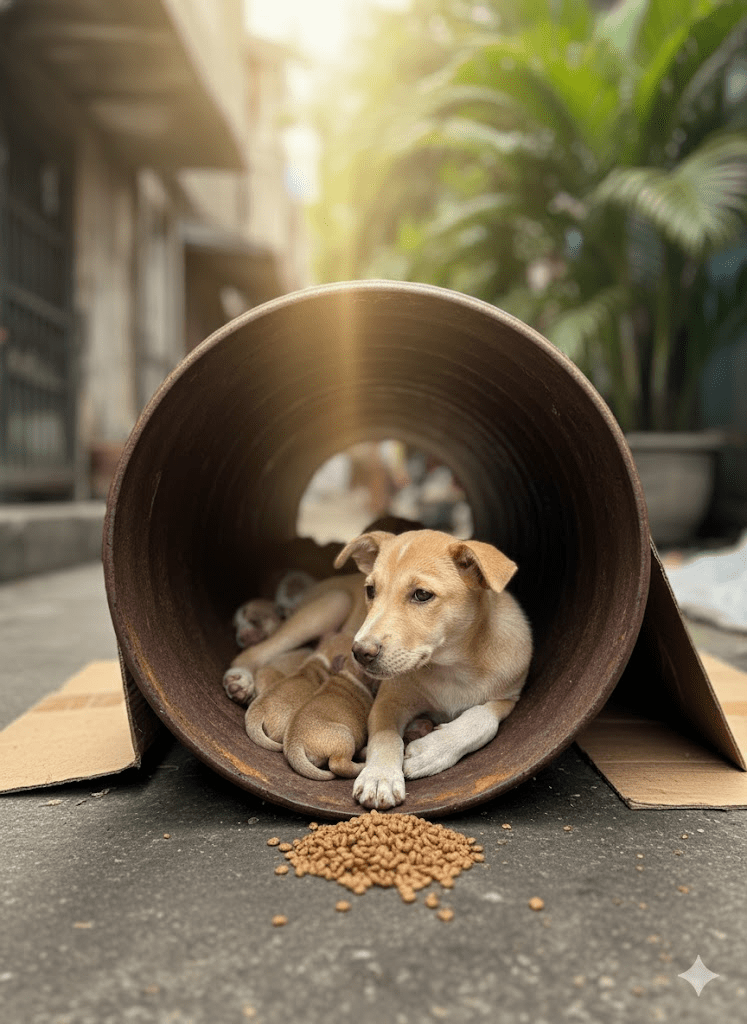
The local community, already touched by the image of Bantay, responded with an outpouring of generosity once his full story, including his hidden litter, came to light. The food distribution volunteers, initially surprised by Bantay’s presence, were now actively ensuring he received a share, often setting aside food specifically for him to take back to his pups. This unexpected twist transformed a moment of passive observation into an active communal effort, highlighting how empathy, once ignited, can bridge the gap between species. The children in the line, far from being annoyed by the puppy, had quietly included him, demonstrating an inherent kindness often overlooked in the daily grind of survival. This interaction underscored a powerful truth: compassion is not a learned behavior limited by species, but an instinct that can flourish even in the harshest environments.
